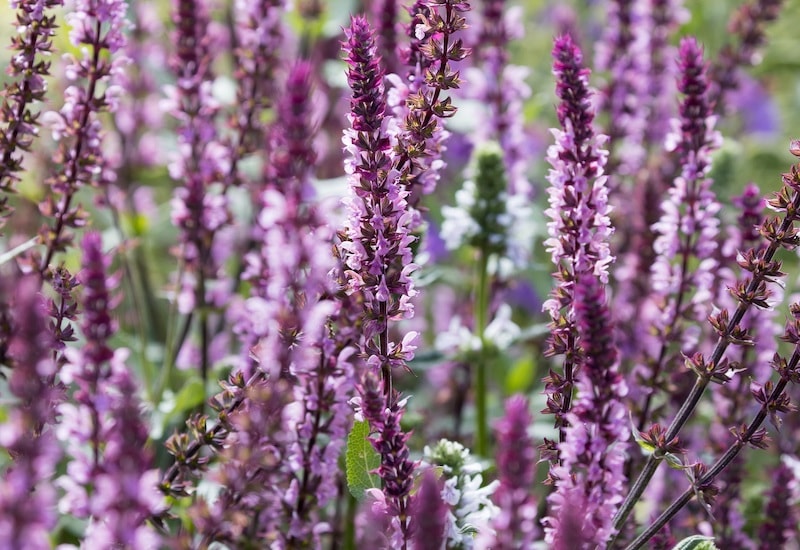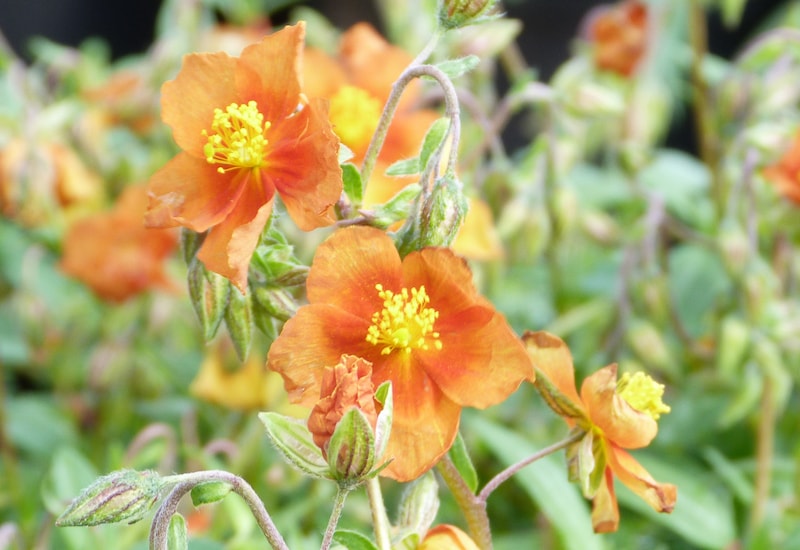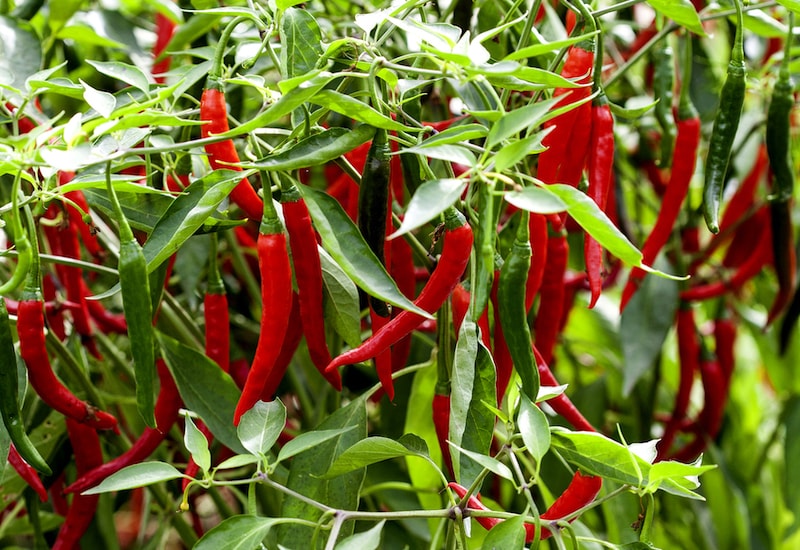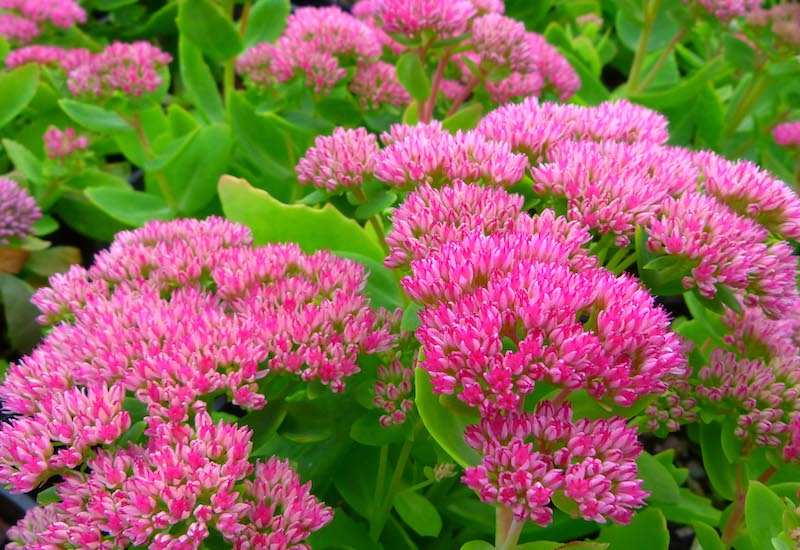Hot, dry summers and hosepipe bans are becoming more frequent here in the UK, but you can keep your garden looking lush and beautiful by choosing drought-proof plants. Whether you want brightly-coloured blooms, tropical foliage, or even a vegetable garden that can cope with less water, you’re in the right place.
Here are some of the best tips and tricks from our favourite gardening bloggers to help you future-proof your garden with drought-tolerant plants.
Contents:
- What is a drought-proof garden?
- Best advice on drought-tolerant plants and flowers
- Best advice on drought-tolerant vegetables
- Best advice on efficient watering techniques
What is a drought-proof garden?

Image: Salvia ‘Caradonna Pink Inspiration’ from Suttons
If you want to drought-proof your garden, it’s crucial to take care of your soil. Over on Sow Much More, organic gardener Becky Searle keeps her soil in tip top condition using the no-dig approach, spreading an “annual mulch of compost”. This surface layer of mulch slows evaporation and helps the soil to retain moisture. Over time, it’s incorporated by organisms, improving the structure and creating a more fertile environment for plants. Read her full article for more advice.
If you have poor, free-draining soil and not much rainfall, creating a ‘dry garden’ covered by a thick layer of gravel helps to retain moisture, says Alexandra Campbell of The Middlesized Garden. In a fascinating interview with Asa Gregers-Warg, head gardener at the famous Beth Chatto Gardens in Essex, Alexandra finds out how they successfully manage a gravel garden without ever watering it. Asa’s tip is to buy smaller and younger plants that “get established more easily than larger, more mature ones”. Read Alexandra’s excellent interview for more advice.
Hotter summers and hosepipe bans are a killer combination for traditional grass, so why not “consider removing your lawn entirely”? In her article on drought-tolerant, low-maintenance gardening, Anna Barker of Lush Garden Design makes the case for a fully-planted garden filled with colour, structure and interest. With no grass to mow and little chance of weeds taking hold, it’s easy to care for and improves biodiversity by attracting wildlife. Not convinced? Check out Anna’s fantastic photos.
Best advice on drought-tolerant plants and flowers

Image: Helianthemum ‘Bronze Carpet’ from Suttons
If you’re looking for the best flowering shrubs for a hot dry garden, garden designer Janet Bligh recommends the dome-shaped Potentilla which has various coloured flowers and is “very useful to keep weeds at bay”. Lavender is another of her top picks because you can choose varieties that flower at different times. You have to prune lavender correctly to keep it in good shape, says Janet, but “there’s really nothing like it for fragrance and intense colour when planted en masse.”
Over at Mr Plant Geek, Michael urges us to be inspired rather than limited by the conditions in our gardens. “Sometimes it’s the restrictions we face that stimulate the most creative solutions,” he enthuses. His extensive list of plants that cope well in dry weather has something for everyone, from the dramatic red-hot pokers (excellent for structure) to the sumptuous frilled petals of bearded iris. Whatever you choose, it all comes down to “finding the right plant for the right place,” says Michael.
Marie of Plews Garden Design has been experimenting with growing drought-tolerant plants in containers and has put together a wonderfully varied list of herbs, ornamental shrubs, grasses, perennials and climbers, which will happily “grow in pots and containers for at least three years”. When choosing herbaceous perennials for dry conditions, she explains that “silver-grey foliage, fleshy leaves and furry surfaces” tend to be themost drought-tolerant types. Her full list of drought-proof plants for pots even includes dwarf fruit trees!
Over on Instagram, gardening journalist Emma Crawforth loves the colour and shape of Euphorbia myrsinites which “makes a dry situation its own”. Her photo really shows off the bright yellows and silvery greens of this evergreen perennial, and it’s one of Emma’s top picks “for climate-change-England”. Follow her over at @emma_crawforth for inspirational images of flowers and wildlife.
“Even if we’re predicted to have hotter, drier summers in the future, we may well get odd wet summers,” says Alexandra of The Middlesized Garden. Sitting in the exquisitely planted outdoor dining area belonging to garden designer and Great British Bake Off finalistJane Beedle, Alexandra asks her advice on drought-tolerant plants that can cope with wet weather. Jane recommends Himalayan silver birch, olive trees and Amelanchier, all of which have survived hot, dry summers and heavy rainfall. Watch Alexandra’s video to see Jane’s gorgeous garden, and for expert tips on establishing trees and larger shrubs.
Best advice on drought-tolerant vegetables

Image: Chilli Pepper ‘Longhorn’ F1 from Suttons
To give your vegetables the best chance of success in a dry growing season, “we want to help more moisture get into the soil and we want to keep it there for as long as possible,” explains Nancy, The Natural Gardener. Her simple and effective solution is mulch, and her article on drought-proof veg provides some great advice on the best mulches for the various stages of vegetable-growing. Her top tip? Match your mulch to your vegetables – using a thick layer of straw or hay for any large, fruiting plants “can save a huge amount of watering time and it does keep the soil in fabulous condition”.
Over at Byther Farm, expert veg grower Liz Zorab uses the no-dig method and applies moisture-saving mulch to stop her soil drying out. Choosing vegetables that thrive in dry environments, she recommends those with deeper root systems and leaves that have adapted to lose less moisture. Swiss chard is one of her top 10 drought-resistant vegetables, along with rocket. Although it produces smaller leaves in periods of drought, it benefits from an enhanced, peppery taste!
Over at Living On One Acre Or Less, ecologist and gardener Sally Morgan has taken a keen interest in halophytes – plants that can grow in extreme high-salt environments – and describes them as “the ultimate climate-resilient plant.” Many of them outperform even her most drought-tolerant varieties. Sally highly recommends growing edible halophytes like sea beet (which is high in vitamin C), and summer purslane (an excellent source of omega-3).
Best advice on efficient watering techniques

Image: Agapanthus ‘African Skies’ from Suttons
To preserve precious resources, now’s the perfect time to learn how to keep your garden looking lush with less water, says Katharine from The Tea Break Gardener. Her article is a masterclass in how to water a garden without a hosepipe, encouraging us to think carefully about what each plant needs rather than applying a ‘one size fits all’ approach. Think you know how to use watering-cans properly? Read Katharine’s article and test your knowledge!
Carol Bartlett from The Sunday Gardener has plenty of tips on how to water your garden efficiently including getting down low and watering at ground level. Not only does this directly reach the roots, it avoids splashing the leaves and reduces the chance of fungal diseases. Carol’s article is brimming with tips and tricks that may surprise you – take a look to find out why watering in the morning is better than watering at night.
You can always rely on Lee Burkhill at Garden Ninja for no-nonsense gardening advice, and his list of 10 ways to save time and conserve water in the garden doesn’t disappoint. From collecting rainwater to reusing grey kitchen water, his article features creative approaches to keeping your plants hydrated. His most inspired suggestion is the reuse of fish tank water: “the nutrients…are great for promoting lush, healthy plants saving the need to add extra fertiliser.” Brilliant!
Over on YouTube, Tanya Anderson of Lovely Greens demonstrates how to use an ancient gardening technique to keep plants happy in prolonged periods of dry weather. ‘Ollas’ are unglazed terracotta pots filled with water and buried in the soil. Because terracotta is porous, the pots provide slow-release moisture where it’s needed most. Watch Tanya’s video on how to use ollas to see how she keeps her lettuce growing through a drought.
We hope we’ve inspired you with this collection of expert advice on drought-tolerant planting. Thinking of creating a gravel garden or removing your lawn? Check out our range of flowering shrubs for bright bursts of colour!
Lead image: Sedum spectabile ‘Brilliant’ from Suttons
Last Updated on September 13, 2024 by Suttons Horticultural Team






Very informative! Any recommendations on what type of aggregate is best for good drainage?